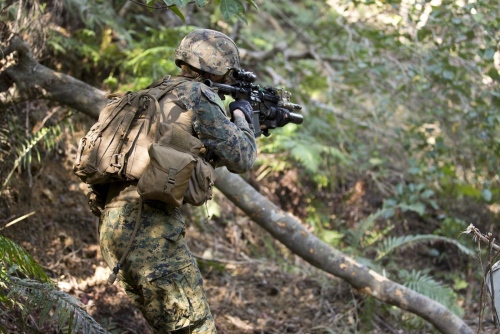What Is the Difference Between Army Camo vs Hunting Camo?
Camouflage patterns are an essential aspect of military and hunting gear, designed to help individuals blend into their surroundings. However, despite their similar purpose, army camo vs hunting camo differ significantly in their design, application, and evolution. Understanding these differences is crucial for both military personnel and hunters to maximize their efficiency and effectiveness in their respective fields.
Army camo, also known as military camouflage, is designed to conceal soldiers from enemies in various combat environments. This type of camouflage has evolved significantly over the years, adapting to changes in warfare, technology, and environments. Modern army camo is sophisticated, incorporating digital patterns and advanced materials to offer better concealment and durability.
On the other hand, hunting camo is specifically tailored for hunters to blend into natural environments and avoid detection by wildlife. The primary goal of hunting camo is to break up the human silhouette and mimic the natural surroundings, such as forests, fields, and wetlands. Hunting camo patterns vary widely depending on the type of terrain and vegetation in the hunting area.
As the leading OEM/ODM hunting clothing manufacturer and supplier, BOWINS Garment offers custom hunting camo pants, jackets and vests for global brands. This comprehensive guide will explore the differences between army camo and hunting camo, covering their definitions, historical evolution, specific adaptations, and the unique stealth technologies they employ. By understanding these distinctions, you can better appreciate the specialized design and functionality of each type of camouflage.
1. What Is Hunting Camo?
Hunting camo, or hunting camouflage, is a specialized type of clothing and gear designed to help hunters blend into their natural surroundings. The primary purpose of hunting camo is to make hunters less visible to wildlife, thereby increasing their chances of a successful hunt. Hunting camo achieves this by using colors, patterns, and materials that mimic the environment in which the hunting takes place.
1.1 Types of Hunting Camo Patterns
Hunting camo comes in various patterns, each designed to work in different types of terrain and vegetation. Common hunting camo patterns include:
Woodland Camo: Ideal for forested areas with dense trees and underbrush.
Reed Camo: Designed for wetland areas with tall grasses and reeds.
Snow Camo: Perfect for snowy environments, using white and gray tones to blend into the snow-covered landscape.
Desert Camo: Utilizes sandy and earthy tones to blend into arid, desert-like environments.
1.2 Materials and Technology
Hunting camo often incorporates advanced materials and technologies to enhance performance. These may include:
Scent Control: Fabrics treated to reduce human scent, making it harder for animals to detect the hunter.
Noise Reduction: Soft, quiet fabrics that minimize noise as the hunter moves.
Weather Resistance: Waterproof and windproof materials to keep hunters comfortable in various weather conditions.
1.3 Applications
Hunting camo is used in a variety of hunting activities, including:
Deer Hunting: Typically requires woodland or field camo.
Waterfowl Hunting: Often utilizes reed or marsh camo.
Big Game Hunting: Depending on the environment, different camo patterns may be needed.
2. What Is Army Camo?
Army camo, or military camouflage, is designed to conceal soldiers from enemies in various combat environments. The primary goal is to make soldiers less visible to opponents, enhancing their safety and effectiveness in the field. Army camo patterns are developed based on extensive research and testing to ensure they work effectively in different terrains and combat scenarios.
2.1 Types of Army Camo Patterns
Army camo patterns are categorized based on their intended environment. Common patterns include:
Woodland Camo: Used in forested and jungle environments.
Desert Camo: Designed for arid, desert landscapes.
Urban Camo: Tailored for urban warfare, with patterns that blend into cityscapes.
Digital Camo: Modern patterns that use small pixelated designs to break up the human outline more effectively.
2.2 Materials and Technology
Military camo utilizes advanced materials and technologies to enhance performance, such as:
Infrared Reflectance: Fabrics designed to reduce visibility under infrared light, making soldiers less detectable by night vision equipment.
Durability: High-strength materials that withstand harsh conditions and heavy use.
Multi-environment Adaptability: Patterns that work effectively across multiple environments.
2.3 Applications
Army camo is used in various military operations, including:
Reconnaissance: Requires effective concealment for stealth missions.
Combat: Essential for blending into the environment during engagements.
Training: Used in exercises to simulate real-world conditions.
3. Evolution of Camouflage: Army Camo vs Hunting Camo Adaptations
The evolution of camouflage has been driven by advancements in technology and changes in environmental needs. Both army camo and hunting camo have undergone significant transformations to enhance their effectiveness.
3.1 Early Camouflage
Army Camo
Early military camouflage primarily consisted of simple color schemes designed to blend into specific environments. Soldiers would often use natural materials like leaves and mud to enhance their concealment.
Hunting Camo
In the early days, hunters relied on earth-toned clothing and natural materials to blend into their surroundings. There was little to no specialized hunting camo available.
3.2 Modern Camouflage
Army Camo
Modern military camouflage has evolved to include sophisticated digital patterns and materials that reduce visibility across multiple spectrums, including infrared. The development of digital camouflage began in the late 20th century and has revolutionized military concealment.
Hunting Camo
Hunting camo has also seen significant advancements, with specialized patterns designed for specific environments and improved materials that offer better scent control, noise reduction, and weather resistance.
3.3 Technological Innovations
Army Camo
Technological innovations in army camo include the development of multi-environment patterns and the incorporation of infrared-reflective materials. These advancements have made modern military camo more versatile and effective in various combat scenarios.
Hunting Camo
Innovations in hunting camo have focused on enhancing stealth and comfort. Advanced materials that reduce human scent and noise, combined with realistic patterns that mimic natural environments, have made hunting camo more effective than ever.
4. Differences Between Army Camo vs Hunting Camo
While both army camo and hunting camo serve the purpose of concealment, they differ significantly in their design, application, and functionality.
4.1 Design and Patterns
Army Camo
Army camo patterns are designed to work in various combat environments, from forests to deserts to urban areas. They often use abstract shapes and colors to break up the human outline and reduce visibility.
Hunting Camo
Hunting camo patterns are specifically designed to mimic natural environments and break up the human silhouette. The patterns are often more detailed and realistic, tailored to specific types of terrain and vegetation.
4.2 Materials and Technologies
Army Camo
Military camo utilizes materials that offer durability, infrared reflectance, and multi-environment adaptability. These materials are designed to withstand harsh conditions and heavy use in combat scenarios.
Hunting Camo
Hunting camo incorporates materials that enhance stealth and comfort, such as scent-control fabrics, noise-reduction materials, and weather-resistant coatings. These materials are tailored to the needs of hunters in the field.
4.3 Legal and Practical Requirements
Army Camo
Army camo is subject to strict regulations and standards set by military organizations. The patterns and materials used must meet specific criteria to ensure effectiveness and uniformity across military units.
Hunting Camo
Hunting camo is regulated by hunting laws and guidelines, which vary by region. Hunters must adhere to these regulations to ensure safety and compliance with local hunting practices.
5. Comparing Stealth Technologies: Army Camo and Hunting Camo
Stealth technologies play a crucial role in both army camo and hunting camo, although their applications and implementations differ.
5.1 Infrared Reflectance
Army Camo
Military camo often incorporates infrared-reflective materials to reduce visibility under night vision equipment. This technology is essential for modern warfare, where night operations are common.
Hunting Camo
While infrared reflectance is less critical for hunting, some advanced hunting camo materials offer limited infrared concealment to reduce visibility to wildlife with sensitive vision.
5.2 Scent Control
Army Camo
Scent control is not a primary focus for military camo, as human scent is less of a concern in combat scenarios.
Hunting Camo
Scent control is a crucial aspect of hunting camo, with many materials treated to reduce human scent and avoid detection by wildlife.
5.3 Noise Reduction
Army Camo
Military camo materials are designed to be durable and functional, with less emphasis on noise reduction.
Hunting Camo
Noise reduction is a key feature of hunting camo, with soft, quiet fabrics used to minimize noise as hunters move through the environment.
6. Conclusion
Understanding the differences between army camo and hunting camo is essential for maximizing effectiveness in their respective fields. Army camo is designed for combat environments, focusing on multi-environment adaptability, durability, and infrared concealment. In contrast, hunting camo is tailored for natural environments, emphasizing realistic patterns, scent control, and noise reduction.
Both types of camouflage have evolved significantly over the years, incorporating advanced materials and technologies to enhance their performance. By recognizing these differences, military personnel and hunters can choose the appropriate camouflage to meet their specific needs and ensure success in their activities.













